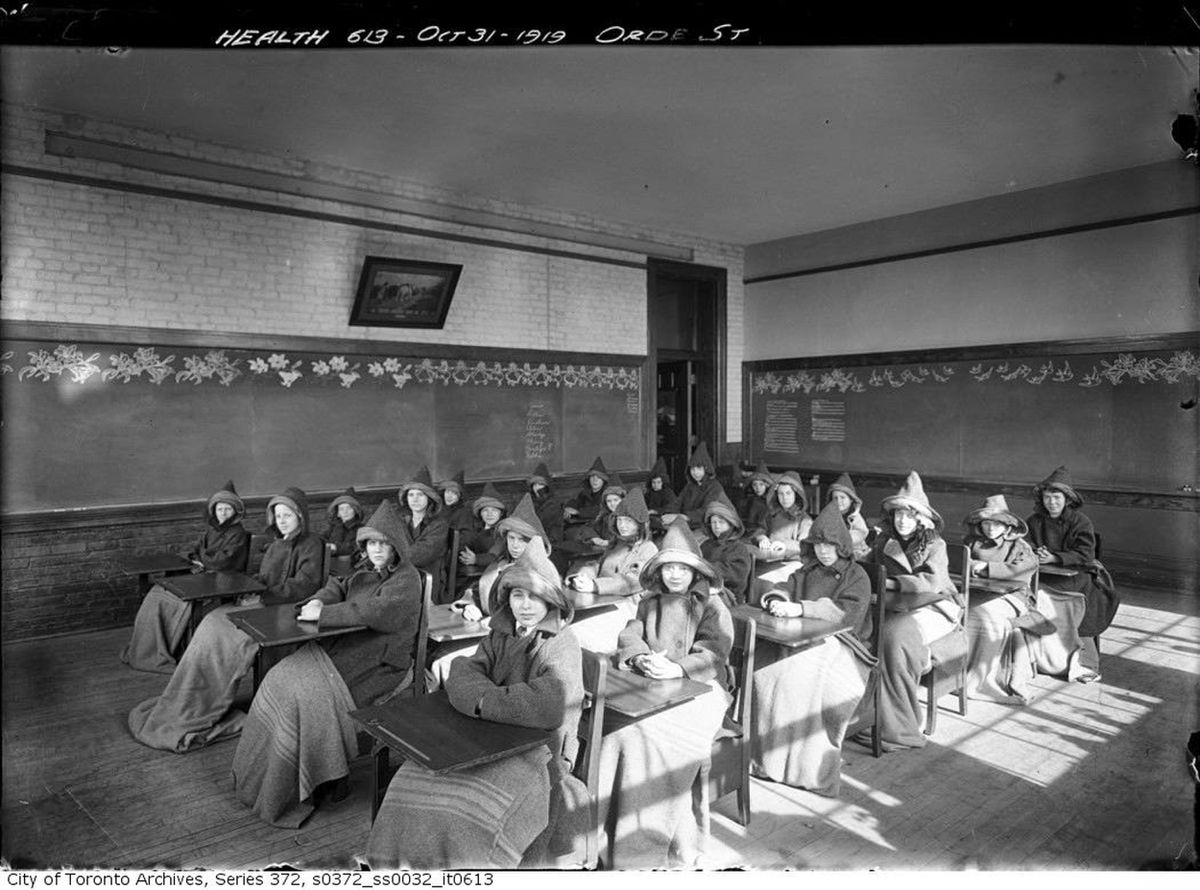In a Globe & Mail article from May 1, 2020 by Dave Leblanc entitled, “What MIght be the Hallmarks of Post-COVID Architecture?“, many questions are raised about how this global pandemic may inform future building design. The article starts by considering how tuberculosis impacted school design back in the early 1900’s, when people believed that sunlight and fresh air, even in winter, would combat the illness. In some instances such as at the Orde Street School in Toronto, an “Open Air School” was created on the top floor, and pupils learned in classrooms with open windows, often bundled in blankets. While this type of change was not permanent, the transition from lead piping to copper piping – which held far fewer germs – was precipitated by health concerns and has been a permanent shift in how buildings are designed and constructed.
Several architects were interviewed for this article and the following ideas were presented:
- Courtyards for people to gather outdoors
- Glassed in corridors with good ventilation
- Buildings that are airtight with managed ventilation
The COVID City: Disease shaped architecture in the 20th century. Will it do that again? https://t.co/0iP9f8aHHT @GlobeArts pic.twitter.com/ITUWvqJZUX
— The Globe and Mail (@globeandmail) May 2, 2020
At Fix Our Schools, we wonder how existing schools will operate post-COVID. It seems as though school buildings themselves will be an important element of how easily any new health and safety protocols can be integrated. In school buildings with narrower hallways, or in schools that are overcapacity, it will clearly be quite difficult for students to maintain distance between one another. Will handwashing sinks and soap become mandatory in every classroom to accommodate regular handwashing or will hand sanitizer become the norm in every classroom?
Effective today, school construction has resumed 🚧
We are fully committed to renewing existing schools & building new schools.
Thanks to MPP Jane McKenna for her strong advocacy to get these critical projects back on track!#onpoli pic.twitter.com/x8a57gIHv0
— Stephen Lecce (@Sflecce) May 4, 2020
Fix Our Schools also wonders how the post-COVID reality will inform the design and funding of new school buildings. Sufficient outdoor greenspace, common spaces such as gymnasiums and cafeterias, and multi-purpose rooms give a school inherently more flexibility to cope with any number of challenges. Good ventilation systems and airtight buildings also seem to be important aspects to consider. So, while these features are more expensive to include in new schools, perhaps certain design aspects of schools will be considered a necessity instead of a luxury going forward.
